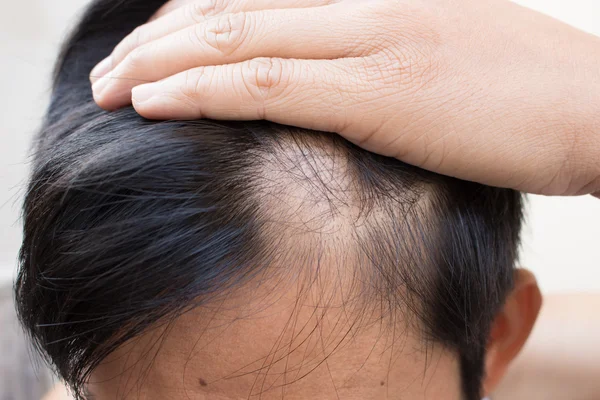A look at “Hair Shedding vs Hair Loss Treatment” Hair can be a source of pride and confidence for many, but it can also become a source of concern when shedding or thinning occurs. The terms “hair shedding” and “hair loss” are often used interchangeably, but they refer to distinct phenomena with different causes and treatments. In this comprehensive guide, we will unravel the nuances between hair shedding and hair loss, shedding light on the key differences and the appropriate treatments for each.
Understanding Hair Shedding
Hair shedding, also known as telogen effluvium, is a natural and temporary phase in the hair growth cycle. Shedding is the process by which old or damaged hair falls out to make way for new hair growth. It’s an integral part of the hair growth cycle and should not be a cause for alarm. However, excessive shedding or shedding due to certain triggers can be concerning.

Causes of Hair Shedding:
- Normal Hair Growth Cycle: On average, individuals shed 50 to 100 hairs daily as part of the normal hair growth cycle. These hairs are in the telogen phase, which is the resting phase of the hair cycle.
- Seasonal Changes: Many people experience increased shedding during certain seasons, particularly in the fall. This is known as seasonal shedding and is considered normal.
- Stress: Physical or emotional stress can trigger hair shedding. This condition, known as telogen effluvium, is often temporary and reversible.
- Dietary Deficiencies: Inadequate nutrition, particularly deficiencies in vitamins and minerals like iron and biotin, can lead to increased shedding.
- Illness or Surgery: Serious illnesses, surgeries, or traumatic events can disrupt the hair growth cycle and result in temporary shedding.
- Medications: Some medications, such as chemotherapy drugs, can lead to hair shedding as a side effect.
Treatment for Hair Shedding:
The treatment for hair shedding primarily depends on its cause. In many cases, addressing the underlying cause, such as reducing stress, improving nutrition, or discontinuing medications, can resolve shedding issues. If shedding persists or is severe, consulting a healthcare professional or dermatologist is advisable for a thorough evaluation and tailored treatment plan.
Understanding Hair Loss
Hair loss, also known as alopecia, is a more permanent and often progressive condition characterized by a significant reduction in hair density or complete hair loss in certain areas. Unlike shedding, hair loss typically does not resolve on its own and often requires specific treatments to manage or reverse.
Causes of Hair Loss:
- Androgenetic Alopecia: Also known as male pattern baldness or female pattern baldness, this is the most common cause of hair loss and is often genetically determined.
- Alopecia Areata: This is an autoimmune disorder in which the immune system mistakenly attacks hair follicles, leading to hair loss in patches.
- Scarring Alopecia: Certain skin conditions or injuries can lead to scarring of the hair follicles, preventing hair from regrowing.
- Traction Alopecia: Excessive pulling or tension on the hair, often due to tight hairstyles, can lead to hair loss in specific areas.
- Medical Conditions: Hair loss can be a symptom of various medical conditions, including thyroid disorders and polycystic ovary syndrome (PCOS).
- Medications: Some medications, such as certain contraceptives and antidepressants, can cause hair loss as a side effect.
Treatment for Hair Loss:
The treatment for hair loss depends on the underlying cause and the severity of the condition. Here are some common approaches to addressing hair loss:
- Medications: FDA-approved medications like minoxidil and finasteride are often prescribed to slow down hair loss and stimulate hair regrowth.
- Topical Treatments: Hair growth-promoting shampoos, serums, and topical solutions containing active ingredients like minoxidil can be beneficial.
- Hair Transplantation: In cases of advanced hair loss, surgical procedures such as Follicular Unit Transplantation (FUT) or Follicular Unit Extraction (FUE) may be considered to transplant healthy hair follicles to balding areas.
- Low-Level Laser Therapy (LLLT): LLLT devices, such as laser combs or helmets, are designed to stimulate hair follicles and promote regrowth.
- Platelet-Rich Plasma (PRP) Therapy: PRP therapy involves injecting a concentration of the patient’s own platelets into the scalp to stimulate hair follicles.
- Lifestyle Changes: Adopting a healthy lifestyle, managing stress, and maintaining a balanced diet can support overall hair health.
Distinguishing Between Shedding and Hair Loss
It’s crucial to differentiate between hair shedding and hair loss to determine the appropriate course of action:
Shedding:
- Temporary: Shedding is typically temporary and often occurs in response to triggers such as stress, illness, or changes in the seasons.
- Even Distribution: Shedding involves the shedding of individual hairs scattered across the scalp, with no distinct bald patches.
- Normal Growth Cycle: Shedding is a natural part of the hair growth cycle, and the hair usually regrows once the triggering factor is resolved.
Hair Loss:
- Progressive: Hair loss is often progressive and does not spontaneously resolve. It may lead to visible bald patches or areas of significant hair thinning.
- Patterned or Patchy: Hair loss can occur in distinct patterns (male or female pattern baldness) or in patches (alopecia areata).
- Underlying Conditions: Hair loss is frequently associated with underlying medical conditions or genetic predisposition.
Seeking Professional Advice
If you are experiencing changes in your hair density or pattern, it’s advisable to seek professional advice from a dermatologist or healthcare provider. They can perform a thorough evaluation, including a physical examination and, if necessary, diagnostic tests, to determine the cause of your hair concerns. Based on their assessment, they can recommend appropriate treatments or interventions tailored to your specific situation.
In Conclusion
Understanding the difference between hair shedding and hair loss is crucial for effective management and treatment. Shedding is a natural and often temporary phase in the hair growth cycle, while hair loss is a more persistent condition that may require targeted treatments. If you have concerns about changes in your hair, consult with a healthcare professional for a comprehensive evaluation and personalized guidance on the most appropriate steps to take.
Also Read | Does High Testosterone Cause Hair Loss in Females? Uncovering the Truth Behind Baldness
Last Updated on September 20, 2023 by 247 News Around The World






